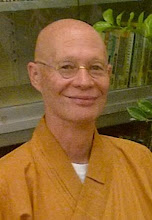In an article published in the British Medical Journal May 20021(1), Dr Raguram writes of his research findings of psychiatric patients taking part in a temple stay in a healing temple in India. His research findings showed that a brief stay at one of the healing temples in South India improved objective measures of clinical psychopathology. Dr Raguram concludes that this is because of the supportive and non-threatening environment and this was in the absence of any healing rituals.
I find this study to be of some interest as there is anecdotal evidence to support Dr Raguram’s research coming from other temple stays in other parts of Asia particularly Thailand and China. It is a very common comment from people involved in staying at a Chinese Buddhist temple at which I am retreat facilitator that their stay was – and I quote from the evaluation sheets issued at the end of their stay – “refreshing”, “a sense of deep peace and rest”, “inspiring”, “healing” and one reported that for him it was “life changing.” I have always been naturally pleased at such comments but it has not been until I read of Dr Raguram’s research that I began to wonder at what deeper benefits there may be from a temple stay. Likewise in the temple at which I am facilitator, there are no specific healing rituals, although participants often voluntarily attend the chanting of either the morning or evening liturgy.
Of particular interest was the comparison of scores on brief psychiatric rating scale subscales on arrival and departure from the temple. Disturbance in thinking- Arrival:12.45(3.21), Departure- 9.81(4.42), tValue 3.701, Pvalue: 0.001. Anxious Depression – Arrival: 7.32 (5.09), Departure: 6.58 (4.74), tValue : 2.101, Pvalue:0.044
There were no comparison groups or rigorous double blind research methods however the findings suggest that the temple has a role to play in mental health recovery and mental healing. Of course, any quiet and supportive environment may have yielded similar results – perhaps. Nonetheless the comments of participants at our temple stay here in China would suggest that other quiet places did not have the same effect for the worried well. I guess I leave it to the readers to come to their own conclusions or to put it to the test and try a temple stay for themselves. Then, tell me the results. Nonetheless it would seem that a Buddhist temple nestled in a bamboo valley or atop a mountain might have more healing qualities than meets the eye.
1. BMJ 2002;325:38–40,Traditional community resources for mental health: a report of temple healing from India
R Raguram, A Venkateswaran, Jayashree Ramakrishna, Mitchell G Weiss
Friday, September 3, 2010
Subscribe to:
Post Comments (Atom)



No comments:
Post a Comment